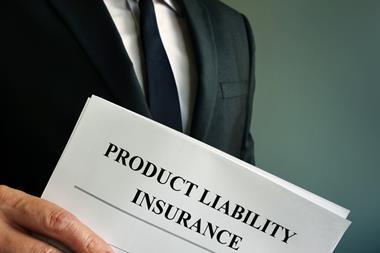The European Commission is happy to hear the concerns of the captive insurance community about Solvency II, finds Nathan Skinner, but there is still considerable uncertainty and a lack of preparation
Solvency II, a huge shakeup of European insurance law, is currently the single biggest fear for captive owners and managers in Europe.
Their concerns centre on the impact that the new regulations will have on the amount of capital they have to retain against their risks, as well as the costs associated with the new governance frameworks that the rules entail.
According to Eciroa, the European Captive Owners Association, Solvency II could force as many as 40% of European captives (around 200 companies) to close as a result of these higher costs. While some believe this is alarmist few doubt that the regulations will have a massive impact on the industry.
“I’ve been saying for a number of years that this is not evolution this is revolution,” comments Sarah Goddard, chief executive of the Dublin Insurance Management Association (DIMA). She thinks the new rules will have a hugely positive impact on the professionalism of the captive insurance industry. “If it wasn’t a good thing a lot of captives would try their best to be exempt from Solvency II but they’re not trying to do that,” she says.
Others are less optimistic about the benefits of the Solvency II agenda. “From a captive perspective Solvency II is a compliance burden which will not deliver that many benefits for the captives themselves,” says Guenter Droese, chairman of Eciroa.
More work few benefits
This view is shared by Alessandro de Felice, group risk manager for Italian cable manufacturer Prysmian. “In my opinion if Solvency II is applied to captives there are no additional benefits. The main impact will be extra work and an increase in administrative costs.” He says costs will come from additional business processes and procedures, compliance officers and external certification.
Droese and Felice are both part of a coalition of captive owners and managers that is working to convince regulators and the European Commission, which is responsible for drafting the scope of the rules, that captive’s should be treated differently to the rest of the insurance market.
These efforts have recently met with some success, but the captive movement is calling on its members to work together to convince the authorities that captives are an important business tool that require special treatment.
More support needed
Martine Hecq, a key figure in the Federation of European Risk Management Associations’ (Ferma) working group on Solvency II and captives, and also director of GDF Suez’s Luxembourg based captive, GDF Suez Re, says: “I’m afraid there are too few captive owners concerned about Solvency II. I urge my colleagues from the captive world, who like me are insurance managers in large corporations, to get involved and understand what Solvency II might mean for them.” She insists that the captive industry needs to close ranks if it hopes to influence the direction that the Directive takes.
One of the most important initiatives, she says, is for captives to undertake the fifth quantitative impact study (QIS5), the results of which will arm lobbyists with valuable information about the effects of Solvency II on captives and help them to influence the policy makers.
Sticking points
One of the main sticking points between the regulators and the captive industry is over the principle of proportionality. Under the rules smaller and less complex insurance companies, like captives, which write fewer risks, are not expected to leap such big regulatory hurdles as their larger, more risky and complex cousins. The problem, though, is there is a lack of clarity on how this will be applied in practice, particularly by regulators at a national level.
Unique
Captives believe they should be treated differently because of their unique structure, size and the fact that they are generally already well risk managed. They say that because they are small insurance vehicles that specifically write risks on behalf of their parent company they could not harm third parties if they ran into problems. This, they say, should be taken into account in a rule that is designed to protect consumers by stopping insurers from going belly up.
“We want to comply to fulfil Solvency II, and this is a firm target, but proportionality is the number one requirement,” says Droese.
“We support the fact that captives are subject to Solvency II,” adds Pierre Sonigo, Ferma’s special representative on captive issues. “It is official recognition that captives are operators in the insurance market and subject to the same type of rules.”
Adds Goddard: “We’re not talking about getting special dispensations its about adequately bringing in this concept of proportionality, so the regulatory structure is the most appropriate for the types of entities being regulated, which is what Solvency II is attempting to do, its appropriate regulation at appropriate levels.”
“If the proportionality principle is applied fairly Solvency II will probably be something good,” says Marc Paasch, another key member of the captive advocacy group, and a general manager in Marsh’s Risk Consulting business. “But the risk is that the burden will be too big.”
Lobbying efforts
The captive lobby has tried to draw the European Commission’s attention to a number of areas where they believe captives require special treatment. The industry lobbies as a group and efforts at cooperation have improved of late as Eciroa and Ferma, the two biggest captive associations in Europe, have teamed up. Correspondingly they have received a better reception from the authorities. “The Commission and CEIOPS (Committee of European Insurance and Occupational Pensions Supervisors) have recognised under the principle of proportionality that captives are small and they need simple formulas to calculate their capital requirements,” explains Paasch.
This recognition has led to a simpler version of the standard formula (the model for calculating solvency limits) being applied to captives. But the industry would like to see this go further. “We would like the simplification of the standard formula to apply to most captives, what is happening now is that it looks as if the simplification will apply to reinsurance captives, but a lot of captives writing not just parent company but third party risks [e.g. those in the retail sector that are effectively selling to the public] will be excluded from the simplification,” continues Paasch.
Only a small number of captives will get access to the simplifications under the restrictions that are currently in place, according to DIMA’s Goddard, who says that less than 10% of the captives in Ireland would get access to simplification.
Captives believe a number of other technical specifications within the Directive need to be altered to reflect the unique nature of their companies. Most of these relate to inputs and the way capital models are set up to calculate solvency margins. One area is concentration risk. Captives usually have their assets invested in two to four banks. But Solvency II states that insurers should have their assets in at least seven banks to avoid a penalty charge for concentration risk. Captives would like to see this threshold dropped to take into account the fact that they cannot diversify their assets as easily as commercial insurers.
Captives are also fighting for a change in the parameters relating to the combined ratio. As it stands the standard formula is calibrated on a combined ratio of 100% but this penalises captives since theirs is usually much lower (60% or less). In short, captives argue they need less capital because their combined ratio is better.
Solvency II disclosure requirements are another concern for captives. “We feel some confidential information, such as premium rates or claims data, might be detrimental from a competition point of view,” says Sonigo. He explains that captives may be obliged to reveal sensitive internal information to their competitors.
Victories
Following publication of the draft proposals for QIS5 in April 2010 the captive lobby was pleased to see that some of its recommendations had been taken into account. One victory was the inclusion of the “look through” concept, which basically means if captives have their assets invested in the Treasury department of their parent this is not viewed as a concentration risk so long as the Treasury department has a diverse portfolio of investments. “The only thing that is not clear is what the Treasury department of the mother has to show in order to prove this,” says Paasch.
While Paasch insists there is still room for more revisions he acknowledges that the Commission has opened its ears to the captive industry. He puts the successes so far down to the way that the industry has harmonised its efforts. “When we started to work in a coordinated way we started to achieve good results,” he says.
Friction points
Cooperation between the different sections of the captive market hasn’t always been easy though, sometimes their goals do not align. Luxembourg, for example, is pleased that reinsurance captives are no longer restricted in the application of simplified methods—because most of the captives there are reinsurance captives. Dublin, which has more direct insurance captives, is not as happy with the different criteria and it stresses the need to have consistency. Malta, which has a mix of both, is somewhere in the middle.
Additionally, Ferma’s Sonigo complains about the “unfriendly attitude” of large insurers regarding captives in their comments to CEIOPS. For large insurance companies, the prospect of captives closing down as a result of Solvency II could be seen as a good thing, if they think captives absorb premiums that would otherwise be spent in the commercial market. But this is the wrong attitude, argues Hecq. “If these guys want us to disappear it is very short term thinking,” she says. “We are not competitors to the insurance market we are partners.”
She says captives help commercial insurers by taking on the risks that they don’t want. “Also I’m a little surprised that we don’t hear more from the brokers. Why don’t they get more involved in the process? If captives disappear they will be in a position where there is less business for them.”
Furthermore, says Hecq, consolidation in the insurance market, which Solvency II is expected to impose, will reduce the number of options for insurance buyers and therefore restrict the services that brokers can provide. “If there are only one or two insurance players on the market will there still be good reason for customers to go via brokers?”
“The insurers say they don’t want simplification or exemptions for captives because they want a level playing field,” continues Sonigo. “We say we don’t play the same field and we don’t even play the same game so why do you want a level playing field?
Commissions response
While positive feedback from the Commission is welcomed by captives there is “still room for revision of the QIS5 draft,” says Paasch. “I think more of our arguments will be heard because regulators are looking at what we say with an open mind.” The Commission is coming round to the idea that there are valid reasons for using a captive, says Goddard. “The Commission understands the value that captives bring to European businesses,” she says.
In the past CEIOPS has not responded well to the captive lobby but this is also beginning to change—some put this down to a change of personnel. Captive leaders are encouraging the industry to seize this opportunity and engage with the Commission and CEIOPS. “The ball is in our court,” says Hecq.
“The majority of captives in Dublin will be running QIS5,” adds Goddard. “The financial regulator in Ireland strongly suggests captives get involved in QIS5.” She agrees that the Commission has responded well to the voice of the captive industry.
“I’ve always found that the Commission has had a very much open door, open ear policy. As we’ve put various propositions forward they have listened, they may not have necessarily agreed, but we’ve had open dialogue.”
Capital requirements
In the long terms Droese is optimistic but he is still concerned that under the strict capital requirements proposed by CEIOPS many captives will fall below the required solvency margins. There are around 550 captives in Europe. Of the 99 captives that took part in the QIS4 survey, 28.3% did not meet the Solvency Capital Requirement (SCR)—see table.
“That’s why we ask all our fellow captive managers and owners to fill in the forms and complete QIS5 and I would like to compare that with QIS4 calculations to show the regulator the difference. It would be very helpful to have more than 60% of European captives running QIS5 because then we can prove if QIS5 is too tough,” says Droese.
“The sense we have is more and more captive owners are taking notice of Solvency II and we expect to have a better response to QIS5 that we had for QIS4,” predicts Sonigo.
Impact
The impact of Solvency II on the captive market is not absolutely clear. But that hasn’t stopped commentators speculating.
Higher capital requirements may convince some CFOs to close captives, suggests Paasch. Alan Fleming, chair of Airmic’s captive working group, says that the extra costs and stricter capital requirements could encourage some captives to flee European domiciles.
Some domiciles outside the EU, such as Guernsey and the Isle of Man, are rumoured to have seen an up-tick in inquiries about captive formation. At the same time these domiciles are also coming under pressure to impose tougher capital requirements. The general consensus, however, is that Solvency II will raise the bar as domiciles without equivalent solvency regimes are considered second class.
In addition, Paasch thinks some direct insurance captives could transform into reinsurance captives to take advantage of the simplifications offered to them under the regime. But, he warns, captives that do so will become subject to fronting costs. There is also the prospect that fronting insurers may increase their fees or ask for better collateral from non-EU domiciled captives for greater security.
Level of preparedness
Generally speaking captives are at an earlier stage of preparation for Solvency II than commercial insurers. “Larger captives are well prepared for Solvency II, the smaller captives probably need to still do some work,” says Paasch.
Most of the work so far has focused on meeting the quantitative burdens of the first pillar of Solvency II. But big challenges await captives in the second pillar, which focuses on effective risk management and governance frameworks. “It depends on the sophistication of the captive at the moment as to how expensive it will be to comply,” says Paasch. “There’s the capital costs and the running costs and if you don’t have access to simplification more actuarial costs.”
In order to assist captives with these problems, Eciroa and Ferma are writing guidelines on best practice governance and risk management systems for captives.
Prepared for the challenge
“It would be extremely naive to think there will not be more demands on the way captives are run under Solvency II,” says Goddard. “But the captive industry here in Dublin does not want an exemption from Solvency II, none of the members of DIMA have looked at this as an option, they want to be part of the regulated community in Europe in an appropriate way and they are prepared to do the extra work.” It is a view shared by De Felice, who owns a Dublin based captive. He says he has started a simulation exercise despite the fact that his captive is below the Euro 5m gross premium income threshold to fall under the scope of Solvency II. “We plan to implement the Directive because we will be above the Euro 5m threshold soon,” he says.
Worth the effort?
“If we are successful in obtaining what we have asked for I think the impact of Solvency II will be OK,” says Sonigo. “The game is really going to be played later this year and early next year.”
Goddard goes further, she thinks Solvency II will benefit the captive industry. “The risk management community has been talking for years about enterprise risk management. This really is the totality of that. If captives are being run as a risk management operation then they will derive immense benefit from Solvency II.”
“If we can get Solvency II to be acceptable from a financial and governance point of view I think we can only benefit from it,” concludes Hecq. “It will be worth the effort.”



















